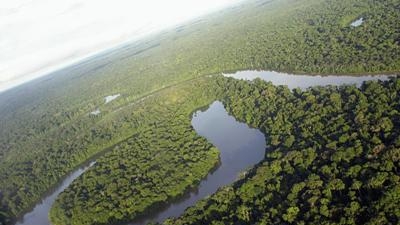Challenge
Brazil’s Legal Amazon Region is the world’s largest intact tropical rain forest. It encompasses around 5 million square kilometers and contains carbon stores estimated at around 120 billion tons. Despite the region’s significant influence on the global climate, it remains threatened by deforestation associated with increasing settlement and expanding agricultural, ranching, logging, and mining operations. A history of poorly planned and managed economic development projects also contributed to the loss of tropical forest, degradation of watersheds, and overexploitation of wildlife and fisheries. The region’s vast size, a lack of managerial capacity and resources, vested interests, and poverty have also slowed regional and national reform efforts.
Investments have traditionally supported extractive and indigenous reserves, sustainable development projects, state and municipal development plans, and the development of ecological corridors. However, projects have paid little attention to strict protection, which is the foundation for sustainable development and ecological integrity.
Solution
The Amazon Regional Protected Areas (ARPA) Program addresses deforestation by expanding and consolidating areas under strict protection. With origins in Brazil’s commitment to reduce deforestation rates, ARPA is working to increase
the total area under strict supervision to 10 percent of Brazil’s Amazon basin.
This means adding around 25 million hectares to the 12 million already under protection. The Government’s commitment includes consolidating the management of existing protected areas, increasing public awareness of environmental concerns, and creating a constituency for strict protection through public consultations and training.
ARPA’s approach includes a web-based system to track management, procurement, and other financial items, a “conjoined account” (conta vinculada) facility to allow for the direct flow of resources to site managers, and a “protection plan” requirement to enhance enforcement and strengthen partnerships with the environmental law agencies.
ARPA was designed as a phased 10-year program. The first phase included specific milestones before implementing the second phase. These milestones were (i) the creation of a minimum of 9 million hectares of new protected areas, (ii) consolidation of 4 million hectares of strict protection areas, and (iii) the establishment of an endowment fund, which is capitalized and meets performance benchmarks.
Results
By the implementation of the second phase, ARPA’s first two milestones were surpassed with the establishment of 62 million hectares of new protected areas. ARPA now covers nearly 70 million hectares of rainforest. A study by the U.S. National Academy of Sciences credits ARPA with a 37 percent decrease in deforestation between 2004 and 2009. In June 2012, the U.S. Treasury recognized ARPA at its inaugural Development Impact Honors.
Public consultations with several communities helped define policies for land occupation and management. The communities are trained in agricultural and extractive techniques to ensure the preservation of natural resources and to prevent and extinguish forest fires. Conservation parks include conservation units with executive councils made up of representatives from the Brazilian Government, civil society associations, and the local administration, among other stakeholders.
World Bank Group Contribution
For the first phase, the World Bank contributed US$30 million in grants from the Global Environment Facility (GEF). GEF funds supported the incremental costs of creating new protected areas and strengthening management infrastructure and financial and cost recovery mechanisms. For the second phase, the GEF provided a grant of US$15.9 million.
Partners
In addition to the World Bank, the World Wildlife Fund (WWF) contributed US$16.5 million to the first phase and US$10 million to the second phase. The German Development Bank (KfW) contributed US$14.4 million to the first phase and US$30 million to the second phase. The Brazilian Government contributed US$18.1 million to the first phase and US$30 million to the second phase. Additional funds were provided by other local sources.
Moving Forward
The second phase, implemented in early 2012 with a budget of US$85.5 million, seeks to (i) create an additional 13.5 million hectares of protected areas, (ii) consolidate 32 million hectares of existing protected areas, and (iii) capitalize the endowment fund with a 150 percent increase over current funds. ARPA’s success has also led to a new World Bank-GEF project in Brazil’s protected coastal areas and marine waters. ARPA will also share lessons learned with new stakeholders and the global conservation community.
Beneficiaries
ARPA’s benefits are immediate and long-lasting, local and global. The protected areas represent an offset of emissions equivalent to 430 million tons of carbon. Indigenous communities are able to return to their way of life, preserving cultures that otherwise would have been lost. Improvements in land use and management allow small family farms and large scale agriculture to co-exist. Diverse service providers as eco-tourism agencies and genetic explorations will also benefit. Finally, with discoveries of new species, medicines, and the preservation of threatened species, ARPA will benefit not only the people of Brazil, but generations around the globe.

